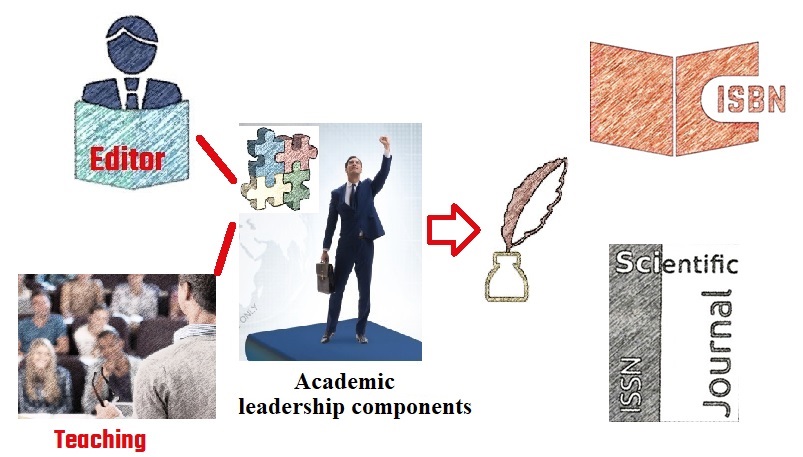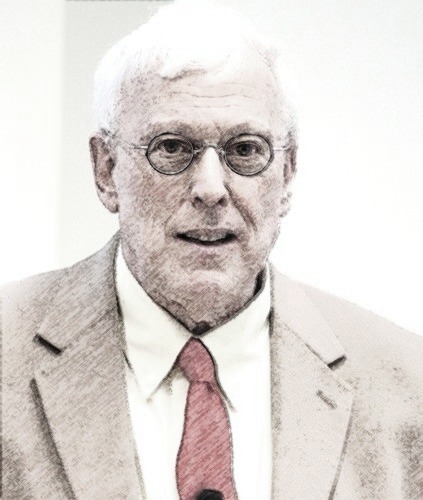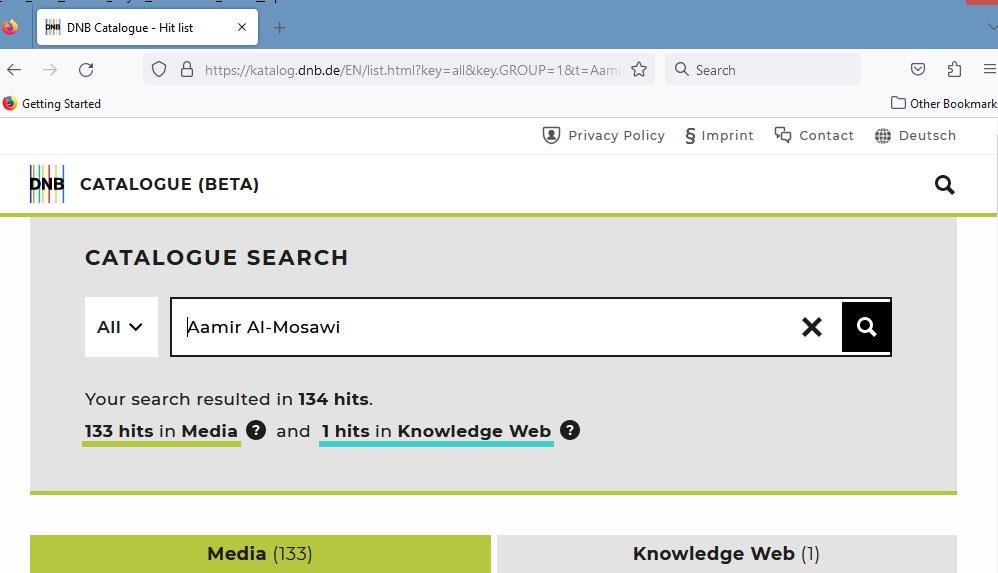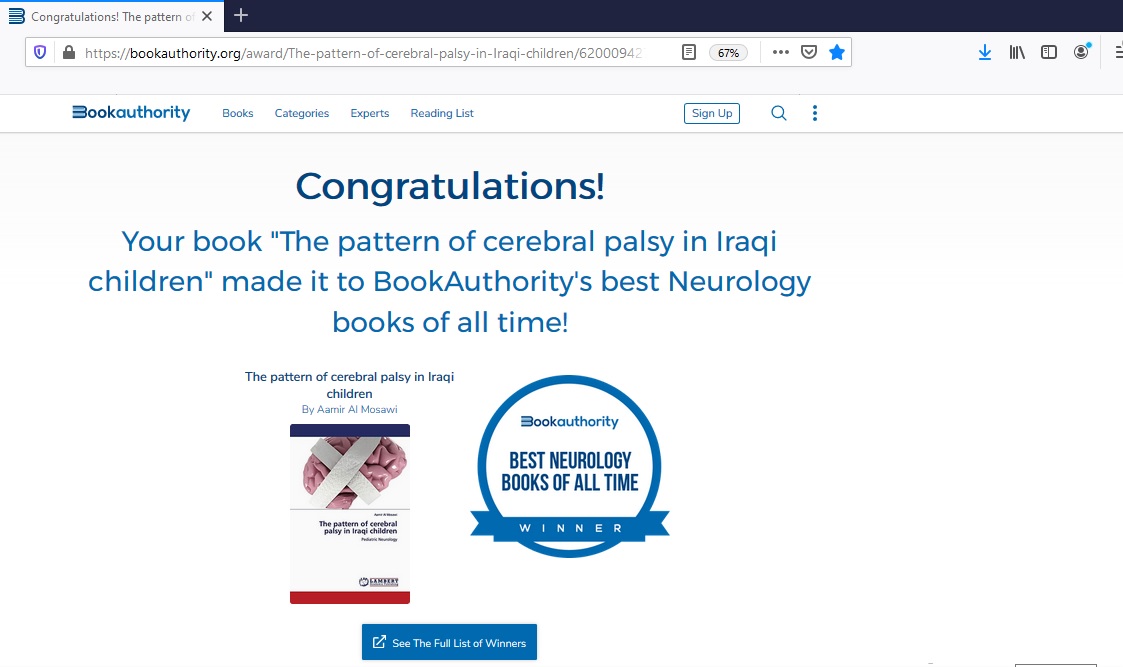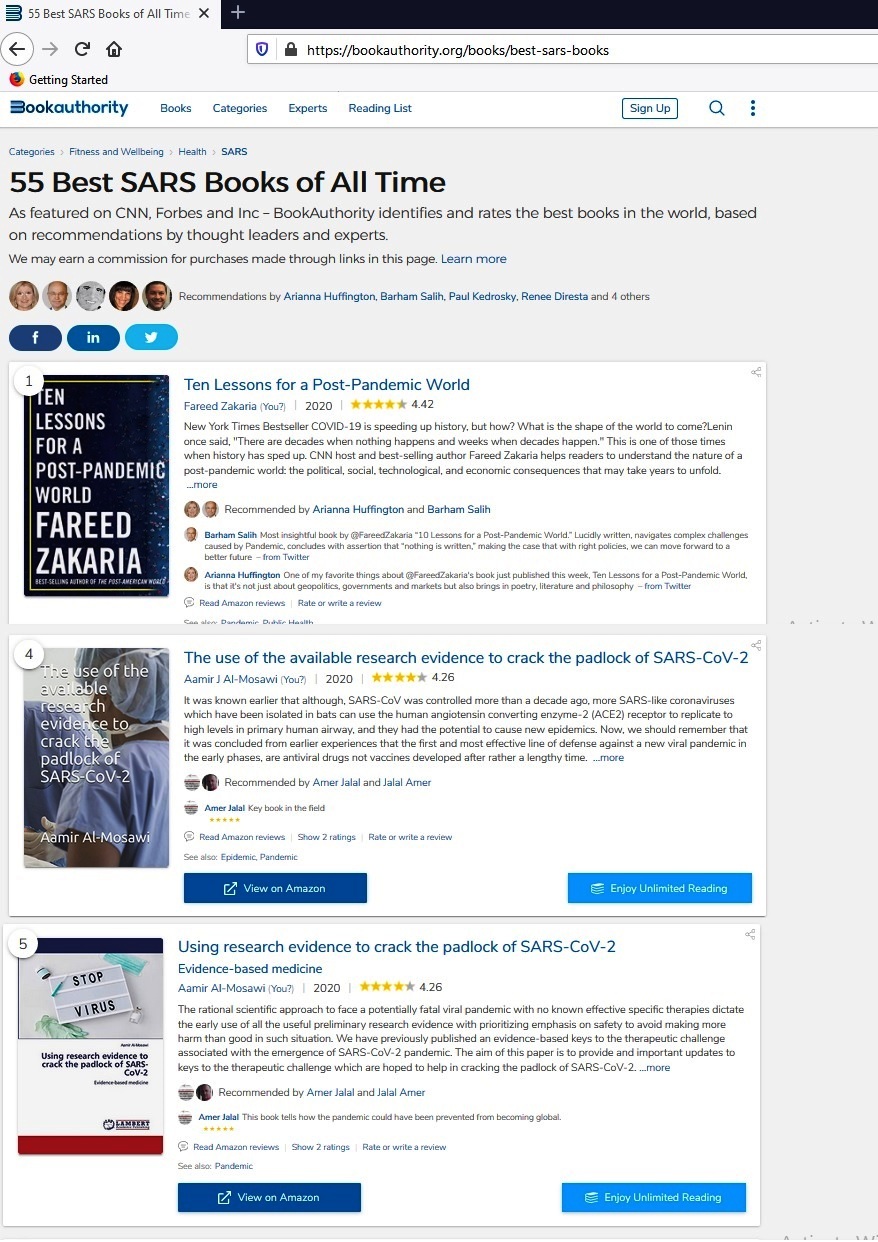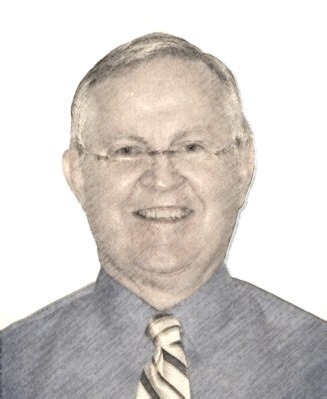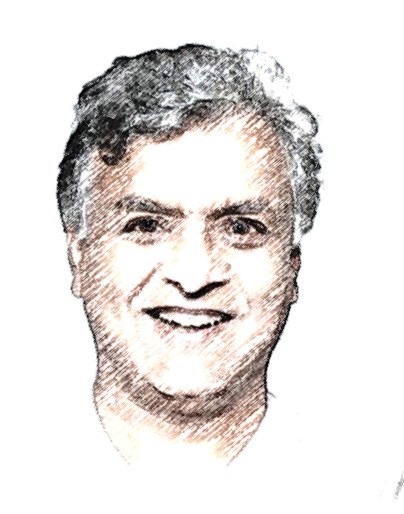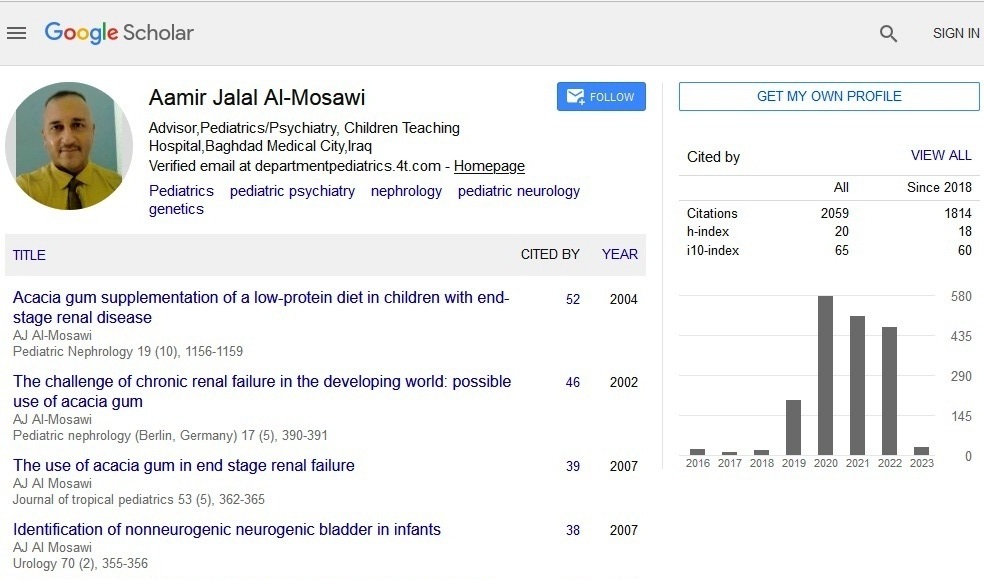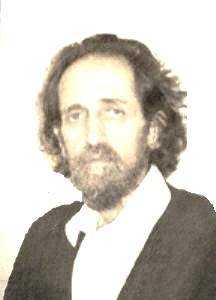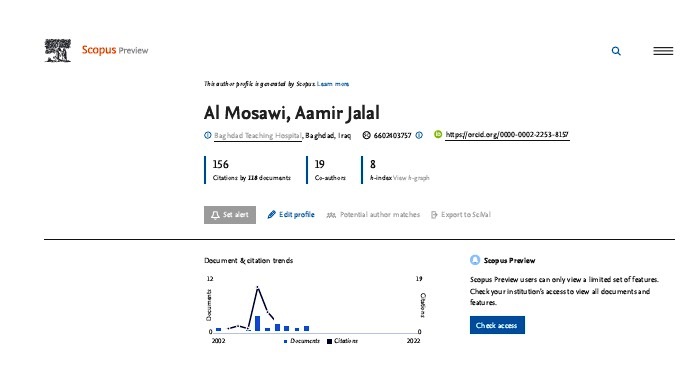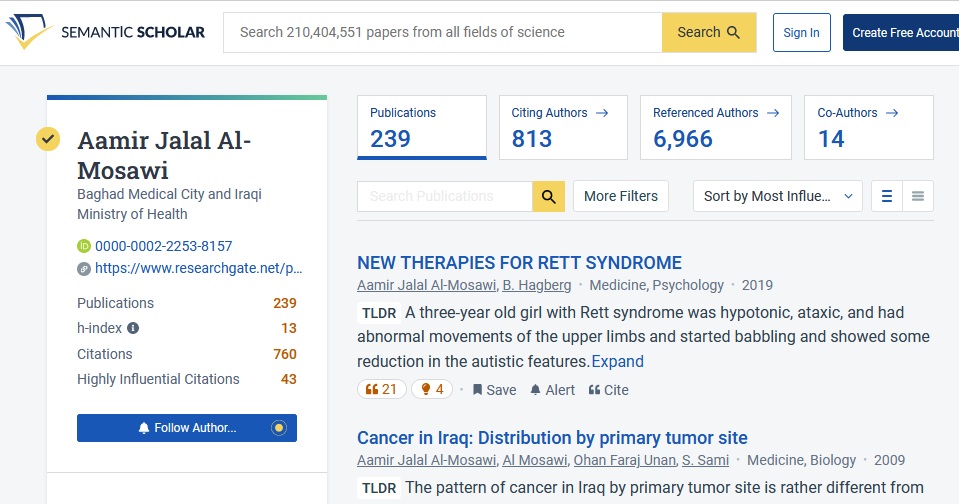Research Article | DOI: https://doi.org/10.58489/2836-8959/008
The H-index: An educational article
- Aamir Jalal Al-Mosawi 1
1 Advisor in Pediatrics and Pediatric Psychiatry, Children Teaching Hospital, Baghdad Medical City, National Training and Development Center, Iraq.
*Corresponding Author: Aamir Jalal Al-Mosawi
Citation: Aamir Jalal Al-Mosawi (2023). The H-index: An educational article. Journal of Clinical Sciences and Clinical Research. 2(1). DOI: 10.58489/2836-8959/008
Copyright: © 2023 Aamir Jalal Al-Mosawi, this is an open access article distributed under the Creative Commons Attribution License, which permits unrestricted use, distribution, and reproduction in any medium, provided the original work is properly cited.
Received: 05 March 2023 | Accepted: 10 March 2023 | Published: 13 March 2023
Keywords: the H-index; academic
Abstract
The H-index has been increasingly used in the ranking of academic institutions including universities because it has been increasingly considered as an important tool for academic leadership assessment. The collective H-index of the academics in an institution represents the institution H-index.
The ranking of academic institutions including universities is actually aiming at determining which institutions are leading in their fields and giving them a reputation credit according to their rank.
The main aim of this paper is to provide the essential knowledge needed by academics about the H-index and the relevant topics.
Introduction
The emergence of the H-index: Why?
Academic leadership used to be more related to teaching at academic institutions and universities during the twentieth century; however, it has become more related to research and academic publishing during the previous two decades.
Academic leadership involves the superior ability, competence and function in institutions, organizations, and settings linked with higher education including colleges, teaching and university hospitals’ clinical departments, specializations and sub-specialization boards, peer-reviewed medical journals, and training centers.
Determining the superior ability, competence and function of academics demands using different tools when research and academic publishing are considered more important in academic leadership than teaching. Therefore, new tools of academic leadership assessment including the H-index have been appearing.
These new tools of academic leadership assessment including the H-index are called bibliometric tools. Bibliometrics is the analysis of academic publications including citation analyses with aim of determining the impact or influence of papers and the academic who authored them [1-8].
Paul Marie Ghislain Otlet (Figure-1A), a Belgian author was the first to use the French term bibliométrie in 1934 to mean the measurement of every thing related to publication.
In 1969, Alan Pritchard used an English version of bibliométrie, statistical bibliography which was replaced later by the term “Bibliometrics” which means the use of mathematics and statistics to books and publications [9].
Components of academic leadership
The main academic activities (Figure-2) that contribute to academic progress and academic leadership include:
1-Academic publishing which include:
Journal articles especially research articles followed by case studies and review articles.
Books and book chapters.
Conference abstracts.
2-Teaching by lecturing and conducting training courses and making presentations.
3-Medical editorship through membership of medical journals’ editorial boards.
Academic publishing which is also called scholarly publishing essentially aims at dissemination of academic research and scientific knowledge. The main forms of academic publishing include journal papers, books, and published conference abstracts. The main important characteristic that distinguishes academic publishing from general or trade publishing is ensuring accuracy of the materials through review by experts in the field. Ideally, academic publication should have the merit of advancing the field of the study through adding new valuable content to the available scientific literature [9-20].
Book authorship and academic medical leadership
Nicky Hayes (Figure-3A) and Robert J. Sternberg (Figure-3B) have recently emphasized that academic book authorship is a scholar endeavor demanding extensive knowledge in the field of the author and also outside the field of the practice of the author.
They also emphasized that academic book authorship is a special form of teaching that actually targeting thousands of readers including students that can not be taught at a personal level. They suggested that academic books help people with their studies, and can possibly transform their understanding, and inspire them. Nicky Hayes and Robert J. Sternberg suggested that only deep understanding in the themes of the authored book can enable the author to summarize the covered knowledge in an informative way. According to them as early as the 1960s and 1970s, academic book authorship was valued by many universities and regarded as evidence of academic excellence. Therefore, academic book authorship can contribute significantly to academic medical leadership.
When it comes to international book authorship in the field of medicine, the German National Library (Deutsche Nationalbibliothek) has the unique advantage of including scientific and academic books in English, German and other languages including Arabic, and the inclusion of a book this library gives an additional credit to book authorship when it comes to academic leadership assessment. An academic author can be searched online for the books included in the library (Figure-4)
The inclusion of a book in Bookauthority's lists of best books of all time gives an additional credit to book authorship when it comes to academic leadership assessment. Bookauthority is the most important book recommendations site that provides recommendations by experts and intellectuals in various fields. Bookauthority identifies and rates the best books using a variety of methodologies. They feature only the very best books (Figure-5) [21, 22].
Medical editorship and academic medical leadership
Adam Chapnick (Figure-6A) and Kim Richard Nossal (Figure-6B) emphasized that medical editorship through academic journal editorship and editorial board membership for academic journals has been increasingly considered a measure of the respect and recognition for the academics because it enables them to contribute to the emergence and evolution of important publications. Board members commonly serve as a source of information, expertise for editors. They also emphasized that journals’ editors and some editorial boards especially in the medical sciences, are powerful academics that can make policy, and assume part of the public personality of the journal they serve.
<!-- /* Font Definitions */ @font-face {font-family:"Cambria Math"; panose-1:2 4 5 3 5 4 6 3 2 4; mso-font-charset:0; mso-generic-font-family:roman; mso-font-pitch:variable; mso-font-signature:-536869121 1107305727 33554432 0 415 0;} /* Style Definitions */ p.MsoNormal, li.MsoNormal, div.MsoNormal {mso-style-unhide:no; mso-style-qformat:yes; mso-style-parent:""; margin:0in; mso-pagination:widow-orphan; font-size:12.0pt; font-family:"Times New Roman",serif; mso-fareast-font-family:"Times New Roman";} .MsoChpDefault {mso-style-type:export-only; mso-default-props:yes; font-size:10.0pt; mso-ansi-font-size:10.0pt; mso-bidi-font-size:10.0pt;} @page WordSection1 {size:8.5in 11.0in; margin:1.0in 1.0in 1.0in 1.0in; mso-header-margin:.5in; mso-footer-margin:.5in; mso-paper-source:0;} div.WordSection1 {page:WordSection1;} -->Arthur G. Bedeian (Figure-6C), David D. Van Fleet (Figure-6D), and Hugh H. Hyman III emphasized that editorial board members are not just determining which academics and scholars have to be approved for their achievement, but they also influence how the scientific papers and achievements are published through their guidelines and recommendations [23-28].
Academic leadership assessment
Academic medical leadership is a difficult concept and its assessment is rather complex, but it is primarily performed through assessment of the productivity and scientific value of the main components of academic medical leadership. It is easier to quantitatively assess the academic productivity of an academic physician by counting the number of academic publications including journal articles, books, and conference abstracts. However, the assessment of the academic value of the publications and other academic achievements is more complex. Academic publications is generally considered the most common and most important contributor to academic productivity, and thus to academic leadership. The simplest way of assessing academic publication is quantitative counting which can not recognize the scientific importance and scientific strength of academic publications.
Currently, the three most commonly used tools for academic leadership assessment are:
1-Google Scholar Citation's H-index
2-Percentile ranking of academia.edu.
3-Scientific reputation (RG) score at researchgate.
However, early during April 2022, researchgate announced that they will be no longer counting the RG score of academics from July, 2022, and they will be using other tools for academic leadership assessment and ranking. Therefore, the popularity of researchgate as a tool for academic leadership assessment and ranking has been declining [9-20].
The h-index: a tool of academic leadership assessment
The H-index calculated by the citation analysis tool of Google Scholar is one of the most important tools for the assessment of academic leadership through measuring the influence of their academic productivity, and this measure is performed mostly through citation analysis of the published journal articles. Google Scholar citation is the most commonly used tool for citation analysis, and an academic can searched online for citation analysis and H-index (Figure-7A).
Google Scholar was founded by Alex Verstak (Figure-7B).and Anurag Acharya (Figure-7C). with the aim of helping in identifying scientific knowledge easier and more efficiently through making the finding of academic (scholarly) articles easier and faster and also by improving the ranking of academic (scholarly) publications and documents in web search.
Google Scholar was released in November 2004 and included a searchable index with the full text or metadata of academic (Scholarly) publications. The Google Scholar index includes most peer-reviewed academic journals, books, conference papers, conference abstracts, and other academic literature.
In 2006, a citation analysis which included the H-index was added to Google Scholar, and Google Scholar H-index has gradually become the most important academic assessment tool despite there were earlier academic citation analysis tools. These sites included much less academic papers than Google Scholar. Google Scholar citation analysis shows the total citation of a particular academic and H-index and i10-H-index (Figure-7D).
The pioneering work of Jorge Eduardo Hirsch (Figure-8), an Argentine American professor of physics suggested that the scientific output of an author (The number of published papers) does not account much for the quality of scientific publications. He introduced the h-index in 2005.
The h-index is the number of papers that have been cited by other papers at least at the same number of times. An academic doctor's h-index of 10 means that he/she has at least 10 papers, each of the, were cited by at least 10 other papers [20, 30, 31].
Therefore, the number of published article is the most important determinant of the H-index, and the H-index of an academic can not be higher than the number of his/her publications.
Thereafter, studies in developed countries have been showing that the H-index increases with academic rank.
In 2008, Janet Lee and her colleagues from the United States emphasized the use of the H-index as a tool for measuring the academic productivity. They reported a study which showed that the H-index increases with academic rank, and therefore it is considered a valuable tool for assessing and comparing the academic productivity output of academics within one field.
In 2010, Arash Ehteshami Rad and his colleagues from the United States reported a study which emphasized that the presence of an important relationship between academic rank and the H-index as the H-index generally increases with academic rank.
In 2013, Peter F Svider and his research team from the USA reported a study which emphasized that the H-index is an easily used measure and a reliable tool for quantifying academic productivity within an academic field, and therefore it is helpful for making decisions about academic advancement and promotion within an academic field. They also emphasized that the use of H-index for comparing academics from different fields can be unreliable.
Also in 2013, Vanash M Patel, a surgeon from the United Kingdom and his research team reported a study which emphasized that the H-index can be used to measure healthcare researchers academic rank and can help in assessing the impact and performance of an academic healthcare researcher.
The H-index is calculated in several sites other than Google Scholar Citation including:
1-Scopus (Figure-9A).
2-Web of Science.
3-Semantic Scholar (Figure-9B).
Scopus and Web of Science are not free, Google Scholar is free.
Also in 2013, Nickalus R Khan and his research team reported a study which emphasized some of the disadvantages of the H-index including its dependence on the citation analysis source. Their study showed that the H-index calculated by Google Scholar Citation was higher than the H-index calculated by Scopus (P = 0.0030).
Nickalus R Khan and his research team also emphasized that the H-index does not consider authors’ position in the cited articles.
Also in 2013, Álvaro Cabezas-Clavijo and Emilio Delgado López-Cózar from Spain emphasized that the Google Scholar H-index is an applicable tool for ranking of academics in Health Sciences bibliometric indicators. They also emphasized that Google Scholar H-index is generally 30% higher than Web of Science H-index, and generally 15% higher than Scopus H-index.
In 2014, Matthew Babineau and his research team reported a study which also emphasized that the H-index depends on the citation analysis source. Their study showed that the H-index calculated by Google Scholar Citation was higher than the H-index calculated by Web of Science. Matthew Babineau and his research team also emphasized that the H-index is not a comprehensive measure of academic productivity [9].
This notion supported using other tools such as the Researchgate RG score and Academia.edu percentile ranking [32-35].
Emphasis has been increasingly made that disregarding the authorship role and the order of an individual researcher in the publications can lead to rather a misleading H-index that is entirely not relevant to academic leadership determination. The publishing of research conducted by a large collaborative research group made many collaborators with minor role in the research creation, development and leadership obtain a high misleading H-index that is not correlated with their academic and research prowess. The use of methods that increase the reliability of the H-index has been increasingly recommended. The use of a corrected H-index calculated from the papers that are really authored by an individual author who should be among the first three authors has been increasingly recommended [3, 4, 5].
The H-index dose not accurately measure the scientific strength of a paper and dose not measure the interest of the scientific community in the researcher work. Papers documenting the occurrence of a very rare or novel conditions or associations will not get a number of citations that is correlated with their scientific strength because of the rarity of the description being published.
Therefore, Researchgate scientific reputation (RG) score has emerged for sometime as the single most important tool for the evaluation of academic medical leadership. Researchgate also gives insights into the academic communications of academics. However, early during April 2022, researchgate announced that they will be no longer counting the RG score of academics from July, 2022, and they will be using other tools for academic leadership assessment and ranking. Therefore, the popularity of researchgate as a tool for academic leadership assessment and ranking has been declining [32, 33, 34,36].
Researchgate as a professional academic assessment tool was developed by a German virologist, Ijad Madisch in 2008. Ranking of academics in Researchgate is based mostly on the final scientific reputation (RG) Score for each academic researcher which is measured based on [32, 33, 34]:
1-The academic output: The number of publications.
2-The impact of the researcher through the cumulative impact factors publications mostly journal articles.
3-Measuring other impact indicators including the number of the downloads of full-text articles, and the views of the meta-data of articles.
Academia.edu academic assessment tool shows mostly an academic ranking in the form of percentiles (e.g., top 1%, top 2%). A percentile ranking is more likely to appear on the profiles of academics having a large number of publications that have been viewed by a large number of other academics.
In 2016, Yuri Niyazov (Figure-10) and his research team examined the citations of 31,216 papers, and found that a paper in a median impact factor journal included in Academia.edu received 16% more citations after one year than a similar article not available online, 51% more citations after three years, and 69
The use of h-index as a factor in academic promotion
Frank P MacMaster and his colleagues from Canada emphasized that Bibliometric tools including the H-index have been increasingly considered in the assessment of academics’ merit for promotions, and they have increasingly influencing academic promotions.
William E Schreiber and Dean M Giustini from Canada emphasized that the H-index has been used to assess performance of academics and scientists working in universities and academic or research institutes. Therefore, academics have to be familiar with the h-index, as it may be used in decisions about professional promotions and advancement. They reported a study which showed that assistant professors in the field of medicine have an h-index of 2-5, while associate professors have an H-index of 6-10, and full professors have an H-index of 12-24.
Recently, Rongzhi Wang and his research group from the United States reported a study which showed the mean H-indexes at the time of academic promotion in the surgical fields from assistant professor to associate professor is 11 and from associate professor to full professor are 17. The suggested the possibility of using the H-index as an objective tool which help when academics can apply for a promotion [9].
Conclusion and recommendation
Academic leadership has been increasingly more related to research and academic publishing that to teaching and instruction during the previous two decades. Therefore, new tools of academic leadership assessment including the H-index have been appearing. These new tools of academic leadership assessment including the H-index are called bibliometric tools. Bibliometrics is the analysis of academic publications including citation analyses with aim of determining the impact or influence of papers and the academic who authored them.
Google Scholar citation has been increasingly considered as the most commonly used tool for citation analysis.
Emphasis has been increasingly made that disregarding the authorship role and the order of an individual researcher in the publications can lead to rather a misleading H-index that is entirely not relevant to academic leadership determination. The publishing of research conducted by a large collaborative research group made many collaborators with minor role in the research creation, development and leadership obtain a high misleading H-index that is not correlated with their academic and research prowess. The use of methods that increase the reliability of the H-index has been increasingly recommended. The use of a corrected H-index calculated from the papers that are really authored by an individual author who should be among the first three authors has been increasingly recommended.
Because the H-index is not a comprehensive tool and ignores some of the activities contributing to academic leadership such as book authorship, it is recommended to consider with the H-index the ranking offered by Researchgate and academia.edu.
Acknowledgement
The figures in this paper were included in previous publications of the author, but he has their copyright.
Conflict of interest: None.
References
- Al-Mosawi AJ. (2019). The scientific productivity and academic output of elite Iraqi pediatricians: h-index reliability indicators. International Journal of Research Studies in Medical and Health Sciences 4(8): 3-6.
View at Publisher | View at Google Scholar - Al-Mosawi AJ (2020). Academic Medical Leadership: An overview of the emerging concepts and ideas. Clinical medical reviews and reports 2(3):1-3.
View at Publisher | View at Google Scholar - Al-Mosawi AJ (2020). A Corrected H-Index for Academic Leadership Determination: A Bibliographic Research. Archives of Health Science; 4 (1):1-7.
View at Publisher | View at Google Scholar - Al-Mosawi AJ (2020). A corrected h-index for academic leadership determination: A bibliographic research. Medico Research Chronicles 7 (4): 207-216.
View at Publisher | View at Google Scholar - Al-Mosawi AJ (2021). The H-index and the corrected H-index in the determination of academic leaders in pediatrics from Iraq. Journal of Urology and Research; 8 (1): 1-11.
View at Publisher | View at Google Scholar - Al-Mosawi AJ (2022). An Introduction to Contemporary Academic Medical Leadership. Journal of Advances in Social Science and Humanities; 08 (04):86-101.
View at Publisher | View at Google Scholar - Al-Mosawi AJ (2022). Contemporary academic medical leadership: A concise textbook. Scholars' Press.
View at Publisher | View at Google Scholar - Al-Mosawi AJ (2022). Principles of academic medical leadership. LAP LAMBERT Academic Publishing.
View at Publisher | View at Google Scholar - Al-Mosawi AJ (2023). The H-index: What academics need to know? LAP LAMBERT Academic Publishing.
View at Publisher | View at Google Scholar - Al-Mosawi AJ (2022). Grundsätze der akademischen medizinischen Führung: Ein akkreditierter Ausbildungskurs (German edition). Verlag Unser Wissen.
View at Publisher | View at Google Scholar - Al-Mosawi AJ (2022). Принципы руководства академической медициной: Аккредитованный учебный курс (Russian edition). Sciencia Scripts.
View at Publisher | View at Google Scholar - Al-Mosawi AJ (2022). Princípios da liderança médica académica: Um curso de formação acreditado (Portuguese edition).Edições Nosso Conhecimento.
View at Publisher | View at Google Scholar - Al-Mosawi AJ (2022). Principi di leadership medica accademica: Un corso di formazione accreditato (Italian edition). Edizioni Sapienza.
View at Publisher | View at Google Scholar - Al-Mosawi AJ (2022). Principios de liderazgo médico académico: Un curso de formación acreditado (Spanish edition). Ediciones Nuestro Conocimiento.
View at Publisher | View at Google Scholar - Al-Mosawi AJ (2022). Akademische Führung im Irak: Academia.edu Perzentil Ranking (German edition). Verlag Unser Wissen.
View at Publisher | View at Google Scholar - Al-Mosawi AJ (2022). Le leadership académique en Irak: Classement par percentile d'Academia.edu (French edition). Editions Notre Savoir.
View at Publisher | View at Google Scholar - Al-Mosawi AJ (2022). Академическое лидерство в Ираке: Процентный рейтинг Academia.edu (Russian edition). Sciencia Scripts.
View at Publisher | View at Google Scholar - Al-Mosawi AJ (2022). Leadership accademica in Iraq: Classifica percentile di Academia.edu (Italian edition). Edizioni Sapienza.
View at Publisher | View at Google Scholar - Al-Mosawi AJ (2022). Liderança académica no Iraque: Classificação do percentil Academia.edu acreditado (Portuguese edition). Edições Nosso Conhecimento.
View at Publisher | View at Google Scholar - Al-Mosawi AJ (2022). Liderazgo académico en Irak: Clasificación por percentiles de Academia.edu (Spanish edition). Ediciones Nuestro Conocimiento.
View at Publisher | View at Google Scholar - Al-Mosawi AJ (2022). The Contribution of Elite Iraqi Physicians to International Scientific and Academic Book Authorship: German National Library (Deutsche Nationalbibliothek) Analysis. Journal of Advances in Social Science and Humanities.
View at Publisher | View at Google Scholar - Al-Mosawi AJ (2021). The Contribution of Iraqi Physicians to International Book Authorship. LAP LAMBERT Academic Publishing.
View at Publisher | View at Google Scholar - Al-Mosawi AJ (2022). Iraqi pediatricians’ contribution to international journals editorship. LAP Lambert Academic Publishing.
View at Publisher | View at Google Scholar - Al-Mosawi AJ (2013). Medical journals editorship and medical editing. 1st ed., Saarbrücken; LAP Lambert Academic Publishing.
View at Publisher | View at Google Scholar - Al-Mosawi AJ (2022). Der Beitrag irakischer Kinderärzte zur Herausgabe internationaler Zeitschriften (German edition). Verlag Unser Wissen.
View at Publisher | View at Google Scholar - Al-Mosawi AJ (2022). La contribution des pédiatres irakiens à la rédaction de revues internationales (French edition). Editions Notre Savoir.
View at Publisher | View at Google Scholar - Al-Mosawi AJ (2022). La contribución de los pediatras iraquíes a la dirección de revistas internacionales (Spanish edition). Ediciones Nuestro Conocimiento.
View at Publisher | View at Google Scholar - Al-Mosawi AJ (2022). Il contributo dei pediatri iracheni alla redazione di riviste internazionali (Italian edition). Edizioni Sapienza.
View at Publisher | View at Google Scholar - Al-Mosawi AJ (2021). H-index: Determination of Academic Leaders in Pediatrics from Iraq. Scholars' Press.
View at Publisher | View at Google Scholar - Al-Mosawi AJ (2021). Índice H: Determinação de Líderes Acadêmicos em Pediatria do Iraque (Portuguese edition). Edições Nosso Conhecimento.
View at Publisher | View at Google Scholar - Al-Mosawi AJ (2021). H-индекс: Определение академических лидеров в педиатрии из Ирака (Russian edition). Sciencia Scripts.
View at Publisher | View at Google Scholar - Al-Mosawi AJ (2020). Scientific Productivity of Influential Pediatricians from Ten Arab Countries: Researchgate Analysis.Canadian Journal of Biomedical research and technology; 2(4):1-3.
View at Publisher | View at Google Scholar - Al-Mosawi AJ (2022). Academic Medical Leadership in Iraq: Researchgate Ranking. Journal of Advances in Social Science and Humanities; 08 (04): 102-118.
View at Publisher | View at Google Scholar - Al-Mosawi AJ (2022). Super Elite Pediatricians from 146 Developing Countries: Researchgate Analysis. .Journal of Advances in Social Science and Humanities; 08 (05): 140-154.
View at Publisher | View at Google Scholar - Al-Mosawi AJ (2022). Academic Leadership in Iraq: Academia.edu Percentile Ranking. Journal of Advances in Social Science and Humanities; 08 (06): 155-171.
View at Publisher | View at Google Scholar - Al-Mosawi AJ (2022). Researchgate RG score: Farewell. Researchgate Data.
View at Publisher | View at Google Scholar - Al-Mosawi AJ (2022). Academic leadership in Iraq: Academia.edu percentile ranking. Scholars' Press.
View at Publisher | View at Google Scholar - Al-Mosawi AJ (2022). Akademische Führung im Irak: Academia.edu Perzentil Ranking (German edition). Verlag Unser Wissen.
View at Publisher | View at Google Scholar - Al-Mosawi AJ (2022). Leadership accademica in Iraq: Classifica percentile di Academia.edu (Italian edition). Edizioni Sapienza.
View at Publisher | View at Google Scholar - Al-Mosawi AJ (2022). Liderança académica no Iraque: Classificação do percentil Academia.edu acreditado (Portuguese edition). Edições Nosso Conhecimento.
View at Publisher | View at Google Scholar - Al-Mosawi AJ (2022). Liderazgo académico en Irak: Clasificación por percentiles de Academia.edu. (Spanish edition). Ediciones Nuestro Conocimiento.
View at Publisher | View at Google Scholar

